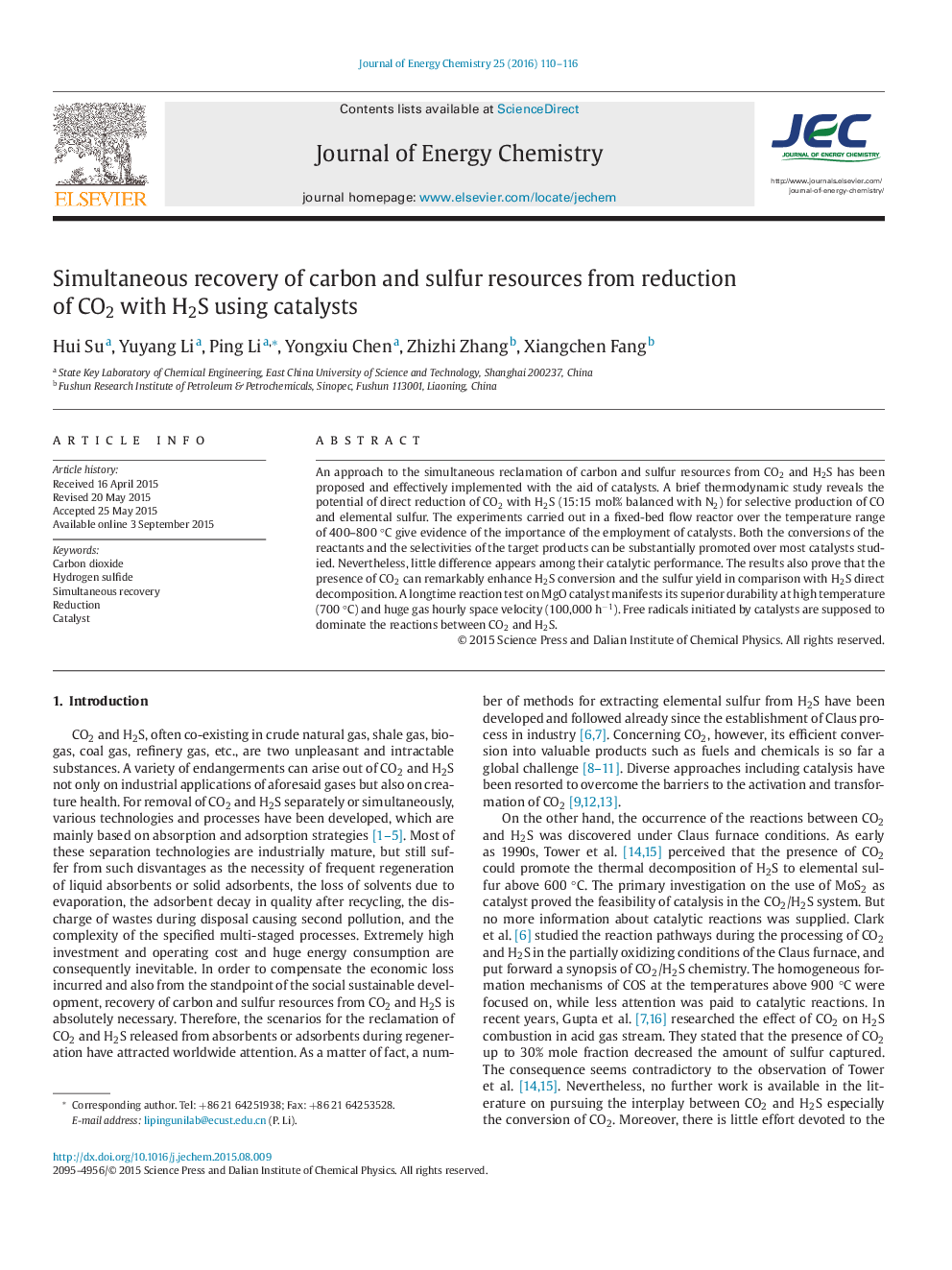| کد مقاله | کد نشریه | سال انتشار | مقاله انگلیسی | نسخه تمام متن |
|---|---|---|---|---|
| 63760 | 48251 | 2016 | 7 صفحه PDF | دانلود رایگان |
An approach to the simultaneous reclamation of carbon and sulfur resources from CO2 and H2S has been proposed and effectively implemented with the aid of catalysts. A brief thermodynamic study reveals the potential of direct reduction of CO2 with H2S (15:15 mol% balanced with N2) for selective production of CO and elemental sulfur. The experiments carried out in a fixed-bed flow reactor over the temperature range of 400–800 °C give evidence of the importance of the employment of catalysts. Both the conversions of the reactants and the selectivities of the target products can be substantially promoted over most catalysts studied. Nevertheless, little difference appears among their catalytic performance. The results also prove that the presence of CO2 can remarkably enhance H2S conversion and the sulfur yield in comparison with H2S direct decomposition. A longtime reaction test on MgO catalyst manifests its superior durability at high temperature (700 °C) and huge gas hourly space velocity (100,000 h−1). Free radicals initiated by catalysts are supposed to dominate the reactions between CO2 and H2S.
A catalytic approach to the simultaneous reclamation of carbon and sulfur resources from CO2 and H2S has been effectively implemented along with the catalyst exhibiting excellent activity and stability.Figure optionsDownload as PowerPoint slide
Journal: Journal of Energy Chemistry - Volume 25, Issue 1, January 2016, Pages 110–116
